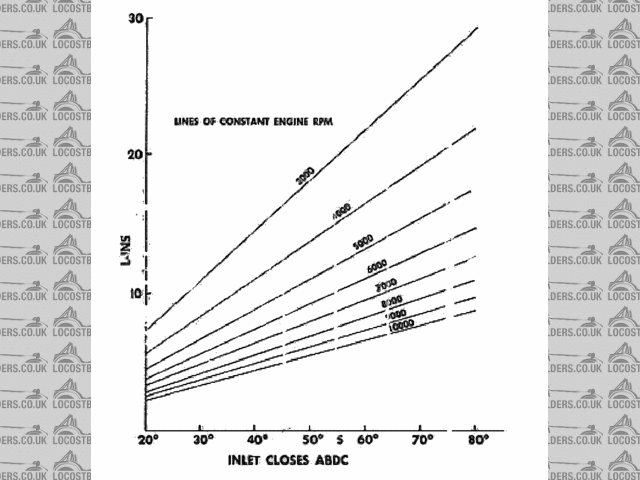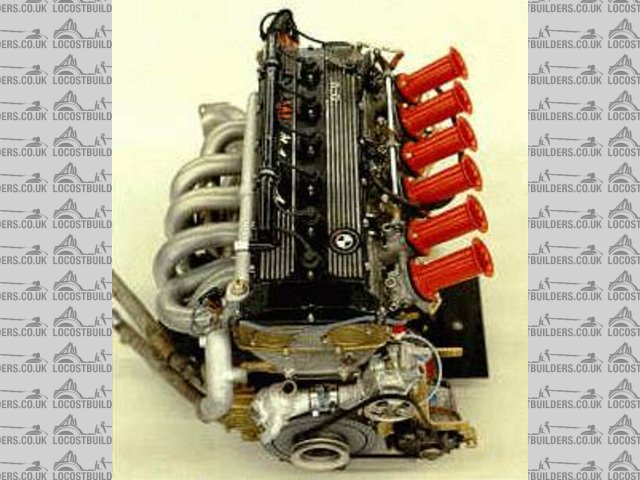scutter
|
| posted on 4/2/03 at 10:06 PM |

|
|
Intake trumpets
Question for you guys,
What are the pro's & con's of full radius intake trumpets?, there must be engineers out there who can answer, I'll even listen to half baked
theories . .
As always I await your replys.
Dan.
|
|
|
|
|
kingr
|
| posted on 5/2/03 at 03:54 PM |

|
|
Half baked theories? That's my specialisation!!! He's a half remembered theory, that was probably half baked at the time :
The vacuum in the carb/trumpet/manifold causes a pressure difference between it and the outside world, which causes air molecules to be drawn through
the carb via the trumpets, unfortunately, the air is not drawn in a straight line directly into the trumpet, it comes in at different angles. So, what
we have is air starting at all sorts of different angles, and finishing going in straight lines. The result? Turbulence. If the trumpets were simple
straight bog roll tubes, the air drawn into the centre of the carb barrel would have travelled a relatively gentle angle, great. The air at the edges
however would have started at somewhere approaching 90 degrees to where it finishes, not so good. What radiused, and to a even greater extent full
radius trumpets attempt to do is guide the air through a gentler turn, the result, less turbulence, more air, more power, great!!
I've got all this written down in a book, so I'll copy that here when I've got it to hand, and all will become clearer, hopefully.
To what degree full radius trumpets improve airflow when compared to less radiused trumpets, I have no idea, anyone got any experience of this? They
do however come in cool anodised colours, which, although only you will probably ever see them, does make a difference  !! !!
Kingr
|
|
|
scutter
|
| posted on 5/2/03 at 04:10 PM |

|
|
Sound good, does that mean the longer the intake length the more settled the air will be when it reaches the carb, the only problem with this is that
I can see it looking silly if the trumpets are say 125mm long with only little sock air filters on the end
Cheers kingr, anyone else have a view?
Dan.
The fastest one handed typing in the south
[Edited on 5/2/03 by scutter]
|
|
|
locodude
|
| posted on 5/2/03 at 08:07 PM |

|
|
I believe also that short trumpets are preferd for higher rpms and longer ones increase torque. All this of course depends on wether you can fit them
in your filters!
|
|
|
Mark Allanson
|
| posted on 5/2/03 at 09:27 PM |

|
|
Audi have engineered a variable inlet tract which varies the length of the 'trumpets' with the rpm, it has a helictical cylinder within a spirial
outer aluminium casting to acheive this. More torque at lower rpm and more power at 4500+
Still drives like a grandads barge, so perhaps it does not really affect the driving pleasure!
|
|
|
johnston
|
| posted on 5/2/03 at 09:56 PM |

|
|
lengthening and shortening the inlet tract (from valve seat to intake) moves the tourque around the rev range in some places trhe torque increases
some it will reduce it
radiused edges venturi shapes trumpet lengths pulse plates etc etc all depend on the engine and the only real way to find out is to book a rollin road
or dyno and test
that is my take on readin a lot of different books but i think dave walkers engine mangement goes into it in a bit of detail
but cant check rent it to a fella aint seen it sense
|
|
|
Jon Ison
|
| posted on 5/2/03 at 10:44 PM |

|
|
i think the btm line on this one is any radius on the entry will only at worst not make things worse, and usually make things better without getting
into the too technical bits...
wot sorta garbage have i put there ??? i know wot i mean.........
|
|
|
jollygreengiant
|
| posted on 5/2/03 at 11:05 PM |

|
|
'What sort of ........'
Relatively subjective but not necessarily wrong.  
Enjoy.
[Edited on 5/2/03 by jollygreengiant]
|
|
|
kingr
|
| posted on 6/2/03 at 09:40 AM |

|
|
I thought it was BMW that made the variable inlet tract? Doesn't look all that clever anyway - as far as I can see, it's just a long trumpet, that
opens a butterfly part way down when the engine reaches a certain RPM. Genius, how do they think of these things. Just sounds like another thing that
doesn't do much except break. Maybe I'm just over cinical.
Kingr
|
|
|
Findlay234
|
| posted on 6/2/03 at 10:37 AM |

|
|
Well there is a science behind it. its to do with pulsed induction. its only really useful for naturaly aspirated engines. when the inlet valve is
open air moves through the inlet tract at high speed. when the valve closes the fast moving air hits the valve and causes a high pressure build up.
this area of preasure is reflected off the valve back down the manifold to the plenum or the ends of the trumpets. the pulse is then reflected back
down into the engine. if you can time the intake to open as this high pressure pulse hits the valve then you get a small amount of forced induction.
the rate at which the valve opens is governed by RPM and the time that the pulse hits it is governed by the speed of sound(340m/s). looking at this
then, it means that to get a well tuned intake it needs to be meters long. not practical in a locost. so instead of making a long intake runner you
can tune the engine to take the 3rd or 4th pulse.(as the pulse will travel back and forth between valve and plenum)
tuning the length of the runner means that it will only work well at an optimum revs. heres a graph from a magazine at the bottom of the page.
cheers
fin
ps oh and while i was writing this i found a site thatll probably give it to you in better detail and better hinglish.
 
Rescued attachment inlet.gif
|
|
|
philgregson
|
| posted on 6/2/03 at 10:59 AM |

|
|
This, I Guess, is pretty much the same sort of thing as tuned exhaust lengths which I presume help to scavange the cylinder better.
Much in the same way as people have experimented with variable length inlet tracts I think there were motorcycles at one time with a variable length
tail pipes conected via the thyrottle linkage.
Not relavent I know but interesting.
Phil
|
|
|
Metal Hippy™
|
| posted on 6/2/03 at 11:06 AM |

|
|
I've got a pic of the old M5 engine, dunno how standard the trumpets were though.
Thought you'd be interested...
 
Rescued attachment BMW M5 engine.jpg
President of the Non-conformist Locost Builders Club. E-mail for details...
|
|
|
Findlay234
|
| posted on 6/2/03 at 11:55 AM |

|
|
If you like your physics and know your maths then have a look at this students site on the subject. his page on intake theory is very
involving..................
http://www.eng.fsu.edu/~shih/eml4421/students' web pages/manifold tuning/index.htm
have fun
fin
[Edited on 6/2/03 by Findlay234]
|
|
|
kingr
|
| posted on 6/2/03 at 02:01 PM |

|
|
I'm thinking those guys probably don't get out much!! Interesting though it is, I can't quite be bothered to trawl through 101 theoretical
equations so that I can add 1HP at a specific RPM and take it from another. Good luck to anyone that does though.
Kingr
|
|
|
Findlay234
|
| posted on 6/2/03 at 02:28 PM |

|
|
yeah v. true a lot of effort for a couple more geegee's but think what you could do in the locost race series with tuned intake, tuned exhaust,
blueprinted engine, mildly ported head(dont know if this ones allowed) and some carbs..... your car would be a winner........ as long as the drivers
any good..........
|
|
|













